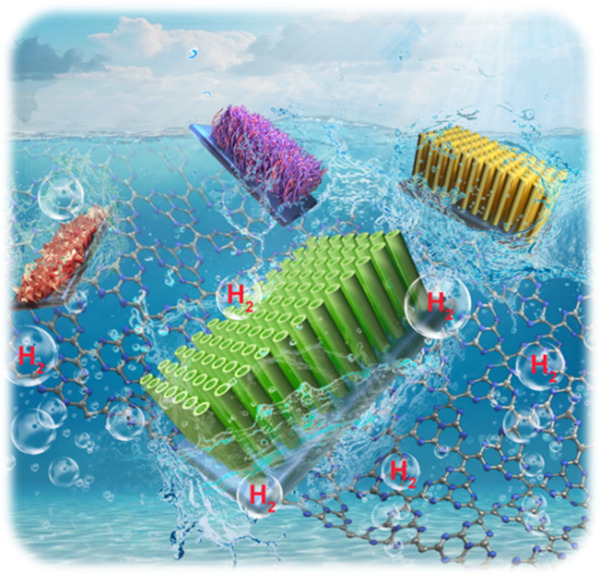当前位置:
X-MOL 学术
›
Carbon Energy
›
论文详情
Our official English website, www.x-mol.net, welcomes your
feedback! (Note: you will need to create a separate account there.)
Graphitic carbon nitride (g‐C3N4)‐based nanosized heteroarrays: Promising materials for photoelectrochemical water splitting
Carbon Energy ( IF 19.5 ) Pub Date : 2020-5-20 , DOI: 10.1002/cey2.48 Liqun Wang 1 , Wenping Si 2 , Yueyu Tong 3 , Feng Hou 2 , Daniele Pergolesi 4 , Jungang Hou 5 , Thomas Lippert 4 , Shi Xue Dou 3 , Ji Liang 2, 3
Carbon Energy ( IF 19.5 ) Pub Date : 2020-5-20 , DOI: 10.1002/cey2.48 Liqun Wang 1 , Wenping Si 2 , Yueyu Tong 3 , Feng Hou 2 , Daniele Pergolesi 4 , Jungang Hou 5 , Thomas Lippert 4 , Shi Xue Dou 3 , Ji Liang 2, 3
Affiliation

|
Constructing graphitic carbon nitride (g-C3N4)-based heteroarrays as photoelectrodes has been regarded as the most straightforward and efficient strategy for enhancing the photoelectrochemical (PEC) performance of g-C3N4. On the one hand, heterojunctions between g-C3N4 and the secondary material can accelerate the separation of photogenerated electrons/holes. On the other hand, highly-ordered array architectures provide the fast transport routes for photogenerated carriers, thus significantly suppressing the recombination of photo-induced charges. Briefly, g-C3N4-based heteroarrays will play a key role in the next years, and will help to pave an avenue to achieve the efficient and stable PEC water splitting for sustainable solar‐driven hydrogen production.
中文翻译:

基于石墨碳氮化物(g-C3N4)的纳米级异质阵列:用于光电化学水分解的有前途的材料
构建基于石墨碳氮化物(g-C3N4)的异质阵列作为光电极已被认为是增强g-C3N4的光电化学(PEC)性能的最直接,最有效的策略。一方面,g-C3N4与辅助材料之间的异质结可以加速光生电子/空穴的分离。另一方面,高度有序的阵列体系结构为光生载流子提供了快速的传输路径,从而显着抑制了光诱导电荷的重组。简而言之,基于g-C3N4的异质阵列将在未来几年中发挥关键作用,并将帮助铺平道路,以实现高效,稳定的PEC水分解,以实现可持续的太阳能驱动制氢。
更新日期:2020-07-01
中文翻译:

基于石墨碳氮化物(g-C3N4)的纳米级异质阵列:用于光电化学水分解的有前途的材料
构建基于石墨碳氮化物(g-C3N4)的异质阵列作为光电极已被认为是增强g-C3N4的光电化学(PEC)性能的最直接,最有效的策略。一方面,g-C3N4与辅助材料之间的异质结可以加速光生电子/空穴的分离。另一方面,高度有序的阵列体系结构为光生载流子提供了快速的传输路径,从而显着抑制了光诱导电荷的重组。简而言之,基于g-C3N4的异质阵列将在未来几年中发挥关键作用,并将帮助铺平道路,以实现高效,稳定的PEC水分解,以实现可持续的太阳能驱动制氢。











































 京公网安备 11010802027423号
京公网安备 11010802027423号